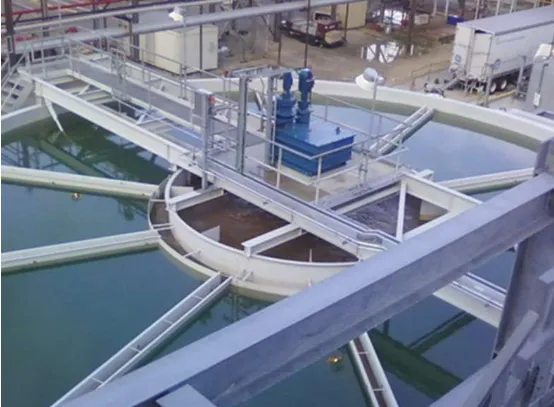
-
 Afrikaans
Afrikaans -
 Albanian
Albanian -
 Amharic
Amharic -
 Arabic
Arabic -
 Armenian
Armenian -
 Azerbaijani
Azerbaijani -
 Basque
Basque -
 Belarusian
Belarusian -
 Bengali
Bengali -
 Bosnian
Bosnian -
 Bulgarian
Bulgarian -
 Catalan
Catalan -
 Cebuano
Cebuano -
 China
China -
 China (Taiwan)
China (Taiwan) -
 Corsican
Corsican -
 Croatian
Croatian -
 Czech
Czech -
 Danish
Danish -
 Dutch
Dutch -
 English
English -
 Esperanto
Esperanto -
 Estonian
Estonian -
 Finnish
Finnish -
 French
French -
 Frisian
Frisian -
 Galician
Galician -
 Georgian
Georgian -
 German
German -
 Greek
Greek -
 Gujarati
Gujarati -
 Haitian Creole
Haitian Creole -
 hausa
hausa -
 hawaiian
hawaiian -
 Hebrew
Hebrew -
 Hindi
Hindi -
 Miao
Miao -
 Hungarian
Hungarian -
 Icelandic
Icelandic -
 igbo
igbo -
 Indonesian
Indonesian -
 irish
irish -
 Italian
Italian -
 Japanese
Japanese -
 Javanese
Javanese -
 Kannada
Kannada -
 kazakh
kazakh -
 Khmer
Khmer -
 Rwandese
Rwandese -
 Korean
Korean -
 Kurdish
Kurdish -
 Kyrgyz
Kyrgyz -
 Lao
Lao -
 Latin
Latin -
 Latvian
Latvian -
 Lithuanian
Lithuanian -
 Luxembourgish
Luxembourgish -
 Macedonian
Macedonian -
 Malgashi
Malgashi -
 Malay
Malay -
 Malayalam
Malayalam -
 Maltese
Maltese -
 Maori
Maori -
 Marathi
Marathi -
 Mongolian
Mongolian -
 Myanmar
Myanmar -
 Nepali
Nepali -
 Norwegian
Norwegian -
 Norwegian
Norwegian -
 Occitan
Occitan -
 Pashto
Pashto -
 Persian
Persian -
 Polish
Polish -
 Portuguese
Portuguese -
 Punjabi
Punjabi -
 Romanian
Romanian -
 Russian
Russian -
 Samoan
Samoan -
 Scottish Gaelic
Scottish Gaelic -
 Serbian
Serbian -
 Sesotho
Sesotho -
 Shona
Shona -
 Sindhi
Sindhi -
 Sinhala
Sinhala -
 Slovak
Slovak -
 Slovenian
Slovenian -
 Somali
Somali -
 Spanish
Spanish -
 Sundanese
Sundanese -
 Swahili
Swahili -
 Swedish
Swedish -
 Tagalog
Tagalog -
 Tajik
Tajik -
 Tamil
Tamil -
 Tatar
Tatar -
 Telugu
Telugu -
 Thai
Thai -
 Turkish
Turkish -
 Turkmen
Turkmen -
 Ukrainian
Ukrainian -
 Urdu
Urdu -
 Uighur
Uighur -
 Uzbek
Uzbek -
 Vietnamese
Vietnamese -
 Welsh
Welsh -
 Bantu
Bantu -
 Yiddish
Yiddish -
 Yoruba
Yoruba -
 Zulu
Zulu
Jan . 25, 2025 01:53
Back to list
the importance of frp launder in modern water treatment
In the rapidly evolving field of water treatment, the FRP (Fiber Reinforced Plastic) launder has emerged as a revolutionary component, transforming traditional practices with its unparalleled benefits. Its integration into water management systems underscores a significant shift towards sustainable, efficient, and durable solutions, which modern industries now prioritize. This article delves into the profound impact of FRP launders in contemporary water treatment systems and why they have become indispensable in achieving optimized operational efficiency.
In terms of environmental impact—a critical criterion in modern water treatment facilities—FRP launders offer advantages that promote sustainable practices. The longer lifespan and reduced maintenance requirements of FRP products mean less frequent replacements and repairs, which in turn diminish resource consumption and waste generation. Additionally, the manufacturing process of FRP is relatively low-impact compared to traditional materials, significantly reducing carbon footprints. Authoritativeness in the sector is evidenced by numerous case studies and industry reports that vouch for the transition to FRP launders as a benchmark of modern water treatment excellence. Facilities that have adopted FRP technology report improved performance metrics, such as enhanced water throughput rates and consistent compliance with stringent regulatory standards. These endorsements from industry leaders and regulatory bodies bolster the credibility of FRP as a cornerstone technology in water management. The trustworthiness of FRP launders also stems from rigorous testing and certification processes they undergo before deployment. Compliance with international standards ensures that these components meet stringent quality and safety requirements, providing facility operators with confidence in their long-term reliability and performance. This assurance is crucial for stakeholders and regulators focused on maintaining public health and environmental safety. In conclusion, the inclusion of FRP launders in modern water treatment regimes represents a fusion of engineering excellence and sustainable practice. Their widespread adoption mirrors an industry-wide shift towards innovative and durable solutions that align with the dual objectives of operational efficiency and environmental stewardship. As water treatment demands continue to grow in complexity and scale, the role of FRP launders will likely deepen, paving the way for more resilient and sustainable infrastructures in the water management domain. The transition to FRP is not merely an upgrade; it is an evolution that heralds a new era of reliability and efficacy in water treatment.


In terms of environmental impact—a critical criterion in modern water treatment facilities—FRP launders offer advantages that promote sustainable practices. The longer lifespan and reduced maintenance requirements of FRP products mean less frequent replacements and repairs, which in turn diminish resource consumption and waste generation. Additionally, the manufacturing process of FRP is relatively low-impact compared to traditional materials, significantly reducing carbon footprints. Authoritativeness in the sector is evidenced by numerous case studies and industry reports that vouch for the transition to FRP launders as a benchmark of modern water treatment excellence. Facilities that have adopted FRP technology report improved performance metrics, such as enhanced water throughput rates and consistent compliance with stringent regulatory standards. These endorsements from industry leaders and regulatory bodies bolster the credibility of FRP as a cornerstone technology in water management. The trustworthiness of FRP launders also stems from rigorous testing and certification processes they undergo before deployment. Compliance with international standards ensures that these components meet stringent quality and safety requirements, providing facility operators with confidence in their long-term reliability and performance. This assurance is crucial for stakeholders and regulators focused on maintaining public health and environmental safety. In conclusion, the inclusion of FRP launders in modern water treatment regimes represents a fusion of engineering excellence and sustainable practice. Their widespread adoption mirrors an industry-wide shift towards innovative and durable solutions that align with the dual objectives of operational efficiency and environmental stewardship. As water treatment demands continue to grow in complexity and scale, the role of FRP launders will likely deepen, paving the way for more resilient and sustainable infrastructures in the water management domain. The transition to FRP is not merely an upgrade; it is an evolution that heralds a new era of reliability and efficacy in water treatment.
Related Products









